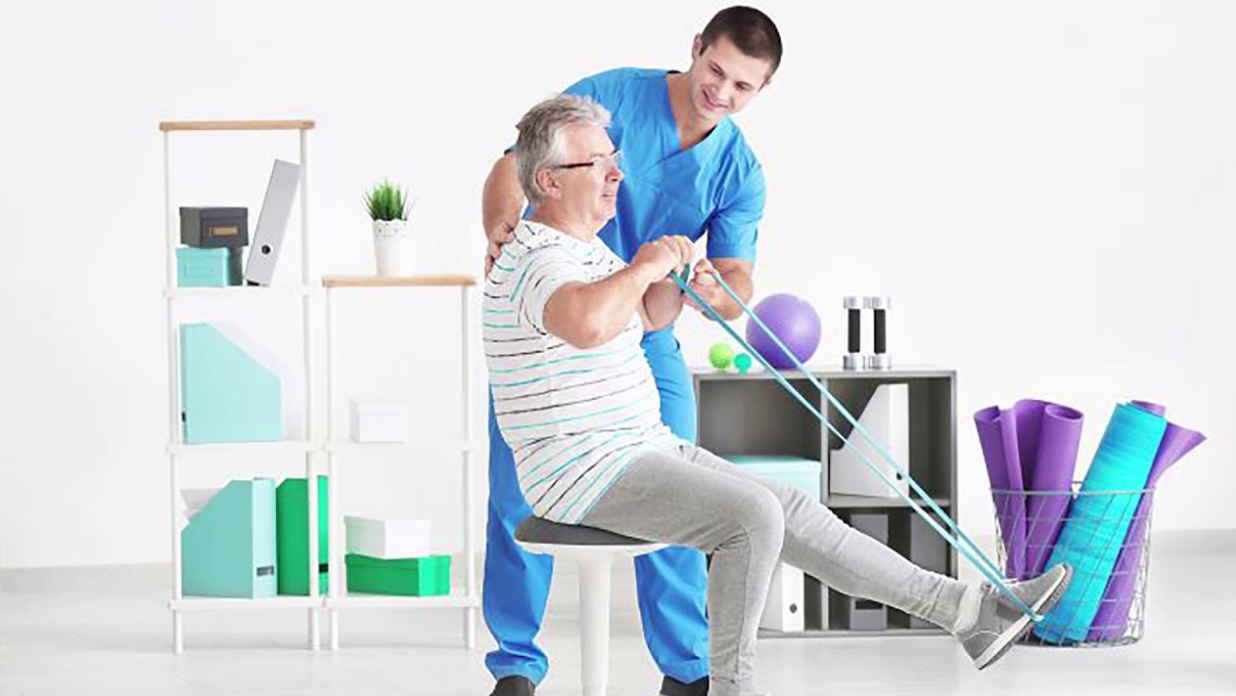Recovering from an injury can be challenging, whether you’ve experienced a sports-related issue, a workplace accident, or a fall at home. Physiotherapy plays a pivotal role in accelerating recovery and restoring functionality. One of the most vital aspects of modern physiotherapy is the use of specialized products designed to aid rehabilitation and improve outcomes.
In this blog, we’ll explore how physiotherapy products enhance post-injury recovery, discuss the role of electrotherapy and rehabilitation tools, and highlight key benefits for patients seeking effective healing solutions.
The Importance of Physiotherapy in Recovery
Physiotherapy focuses on improving movement, reducing pain, and promoting overall physical well-being after an injury. It’s a personalized approach that includes manual therapy, exercises, and equipment designed to:
- Alleviate pain.
- Improve mobility.
- Strengthen muscles and joints.
- Prevent further injury.
Physiotherapy products provide targeted assistance during this process, enabling individuals to regain independence and confidence in their movements.
Key Physiotherapy Products for Recovery
Physiotherapists use various tools to address specific recovery needs. Let’s dive into the top physiotherapy products that can make a difference:
1. Electrotherapy Devices
Electrotherapy is a popular physiotherapy technique that uses electrical currents to stimulate nerves and muscles. Devices like TENS (Transcutaneous Electrical Nerve Stimulation) machines and EMS (Electrical Muscle Stimulation) units are widely used for:
- Pain relief: By interrupting pain signals sent to the brain.
- Muscle stimulation: Encouraging muscle contractions to rebuild strength.
- Improved circulation: Enhancing blood flow to accelerate healing.
Electrotherapy devices are non-invasive and portable, making them convenient for at-home use under a therapist’s guidance.
2. Therapeutic Exercise Equipment
Exercise is crucial for rehabilitation. Physiotherapy incorporates tools like resistance bands, exercise balls, and balance boards to:
- Strengthen muscles: Especially around injured areas.
- Improve flexibility: Restoring full range of motion.
- Enhance coordination: Reducing the risk of future injuries.
These products are versatile and suitable for individuals at various fitness levels.
3. Heat and Cold Therapy Products
Applying heat or cold can significantly impact pain management and swelling reduction. Common products include:
- Heating pads: To relax stiff muscles and improve blood flow.
- Cold packs: To reduce inflammation and numb acute pain.
Heat and cold therapy are simple yet effective methods often recommended during the early and advanced stages of recovery.
4. Support Braces and Splints
Supportive devices like braces and splints provide stability to injured joints and bones, ensuring proper alignment and reducing strain. Common types include:
- Knee braces: For ACL injuries or arthritis.
- Wrist splints: To manage carpal tunnel syndrome.
- Ankle braces: To stabilize sprains or fractures.
These products are essential for maintaining mobility while protecting injured areas.
5. Massage Tools
Massage therapy is a cornerstone of physiotherapy. Tools such as foam rollers, handheld massagers, and massage balls offer benefits like:
- Relieving muscle tension.
- Enhancing flexibility.
- Reducing soreness and stiffness.
Self-massage tools empower patients to manage discomfort between therapy sessions.
6. Rehabilitation Equipment
Rehabilitation is a gradual process that requires consistent effort. Equipment like parallel bars, gait trainers, and stair trainers help patients relearn walking or regain strength after significant injuries.
Rehabilitation tools are particularly beneficial for:
- Stroke recovery.
- Post-surgical rehabilitation.
- Neurological conditions.
The Role of Electrotherapy in Recovery
Electrotherapy stands out for its ability to accelerate healing and improve patient comfort. Here’s why it’s a game-changer:
1. Pain Management
Electrical stimulation from devices like TENS units block pain signals, providing relief without relying on medications. This is especially beneficial for chronic pain conditions.
2. Muscle Re-Education
After prolonged inactivity due to injury, muscles can weaken. EMS devices help retrain these muscles by simulating natural contractions.
3. Enhanced Healing
Improved blood circulation from electrotherapy ensures that injured tissues receive essential nutrients and oxygen for faster recovery.
Electrotherapy is non-invasive and versatile, making it a valuable addition to any rehabilitation plan.
Benefits of Using Physiotherapy Products
The integration of physiotherapy products into recovery plans offers numerous advantages, such as:
1. Faster Recovery
Specialized equipment targets specific issues, speeding up the healing process.
2. Enhanced Comfort
Many products, like heating pads and massage tools, reduce discomfort and make recovery more manageable.
3. Improved Outcomes
Consistent use of physiotherapy tools under professional guidance often results in better long-term results, including increased mobility and strength.
4. Convenience
Portable devices and at-home solutions empower patients to take an active role in their recovery journey.
Tips for Choosing Physiotherapy Products
When selecting physiotherapy products, consider the following:
- Consult a Professional: Always seek advice from a qualified physiotherapist to ensure the product suits your needs.
- Quality Matters: Invest in high-quality, durable products for safety and effectiveness.
- Ease of Use: Choose items that are user-friendly, especially if you’ll use them independently.
- Budget-Friendly Options: Many effective tools are affordable; compare features and reviews to find the best value.
Why Rehabilitation Matters
Rehabilitation is more than just regaining physical strength; it’s about restoring independence and confidence. Physiotherapy products play a crucial role in this process by:
- Supporting gradual progress.
- Encouraging consistency in exercises.
- Providing measurable improvements over time.
Patients who actively participate in rehabilitation often experience better emotional well-being, as they’re empowered to overcome challenges.
Real-Life Success Stories
Sarah’s Recovery Journey
After a severe ankle sprain, Sarah relied on physiotherapy braces, resistance bands, and cold therapy. With consistent effort and professional guidance, she regained her mobility in just three months.
Mike’s Road to Strength
Following shoulder surgery, Mike used EMS devices and massage tools to rebuild strength and relieve pain. Today, he enjoys a full range of motion and participates in his favorite activities again.
Anna’s Stroke Rehabilitation
Anna, recovering from a stroke, found parallel bars and gait trainers instrumental in regaining her ability to walk. Her determination, combined with effective tools, transformed her life.
FAQs
1. What is electrotherapy, and how does it help with recovery?
Electrotherapy uses electrical currents to stimulate nerves and muscles. It helps reduce pain, improve circulation, and rebuild muscle strength, making it a valuable tool in post-injury rehabilitation.
2. Can physiotherapy products be used at home?
Yes, many physiotherapy products, such as TENS units, resistance bands, and heating pads, are designed for at-home use. However, it’s essential to use them under a therapist’s guidance to avoid misuse.
3. How long does rehabilitation take with physiotherapy products?
Recovery time varies based on the injury’s severity and the individual’s commitment to therapy. Consistent use of physiotherapy products, combined with professional guidance, often accelerates the process.
Conclusion
Physiotherapy products are invaluable in enhancing post-injury recovery. From electrotherapy devices to rehabilitation tools, these products empower patients to heal effectively, regain strength, and restore independence. If you’re recovering from an injury, consult a physiotherapist to explore the best options for your needs. With the right tools and dedication, a full recovery is within reach.



